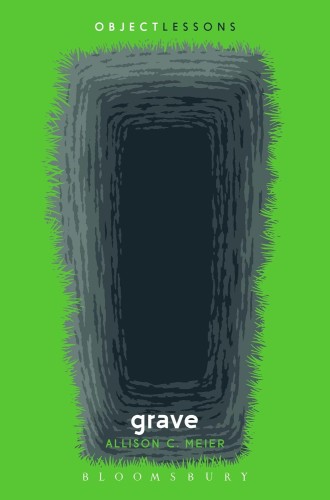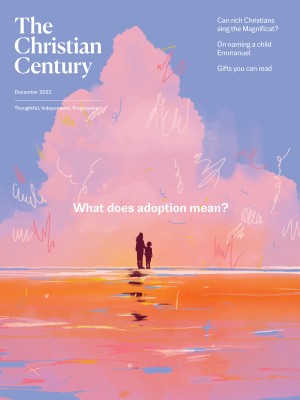Burial with dignity
Allison Meier sees cemeteries as great repositories of cultural history—and as spaces deserving of reverence.
A New York cemetery tour guide and former senior editor of the popular travel site Atlas Obscura, Allison Meier has written what feels like a guidebook to the American grave. Grave—an installment in Bloomsbury’s Object Lessons, a series of compact, beautifully designed books about “the hidden life of ordinary things” such as shopping malls, motels, snakes, and blue jeans—is a digestible history and literary tour of American funerary practices, but it’s not just that. It’s also a case for the dignity of the human person beyond death and a call to keep the dead in community with the living.
Meier has researched graves for years, crawling through tunnels to the depths of the Paris catacombs, shining her flashlight into the chaos of skeletal remains that look to her like the mouth of hell. Yet her interest in graves and funerary traditions doesn’t come across as macabre. She visits—and works in—the graveyards of New York City because she wants to know about the people who lived there before her. While she finds cemeteries to be great repositories of cultural history, she also sees them as spaces deserving of reverence. The quality of her engagement and advocacy work conveys her deep respect for the dead.
Read our latest issue or browse back issues.
Grave is also a pandemic book, written while the vulnerability of New York’s funerary systems was being exposed on international news with unforgettable images of parked refrigerated trucks accepting the overflow of bodies from the local hospitals. “This is not a place I want to die,” Meier found herself thinking. The question of what might happen to her own remains is the personal engine driving the narrative.
“The idea that we should each get an individual grave forever is clearly an American invention,” Tanya Marsh, an expert in cemetery law, tells Meier. The early American myth of endless open land—which was, of course, already occupied—continues to inform our expectations about how, why, and where we should bury our dead. Abroad, graves are usually leased for anywhere from 10 to 75 years and then reused. Recycling graves is important where there’s a lack of land, and it makes good business sense too. If plots aren’t reused, who cares for the grave when there is nobody left to mourn? They fall into disrepair and become hazardous or forgotten, which is the case in many of the old cemeteries Meier explores.
The colonists brought their English burial practices with them, and the Church of England practiced burial in consecrated ground. The church owned the remains and would relocate them to a communal ossuary (or charnel house) when necessary to make space for the newly departed. The only way to avoid eventual mass burial was to be interred under the church or to commission a permanent marker, an expensive practice that signified status. But as American settlements spread out from concentrated urban areas, church burials began to seem unnecessary. With land cheap and plentiful, funerary traditions changed—as did the religious beliefs that accompanied them.
The shift to individualism even in death tracks with a shift in belief about the afterlife, Meier says, as graveyards moved away from churches and became cemeteries. The nonsectarian rural cemetery movement of the 19th century made parklike settings with three-dimensional tombs, statuary, and gardens the new norm: a refuge for both the dead and the living city dweller. The word cemetery, Meier notes, is from the Greek koimeterion, or “sleeping place.” As the word enters the American lexicon, she says, it reinforces a shift from death as a moment of harrowing judgment to a long, peaceful repose from which one might eventually wake. Emphasis on sin and corruption of the physical body shifts to a message of hope in life beyond the grave. Spiritualism was quite popular in the United States in the late 19th century, and the belief that contact with the dead was possible through mediums and séances further contributed to cemetery design and the ongoing desire to have a permanent space for the dead and the living who mourn them.
Meier’s survey of American burial traditions brings us from rural cemeteries to controversies over cremation right up to the present interest in green burial and human composting. Meier is optimistic about the environmental benefits of some of these practices, while remaining cautious of a purely utilitarian view of human remains. Jeremy Bentham, she quips, might have liked the idea of composting his own remains to fertilize a field. The Catholic Church regards human composting as a desecration of the human body, just as it once prohibited cremation.
While some people with financial means, such as the actor Luke Perry, have chosen to be buried in a mushroom suit that aids decomposition, many Americans are still buried anonymously in mass graves. COVID made this plain, and in one of the book’s most moving passages Meier relates a pilgrimage to the public cemetery on New York City’s Hart Island, the 131-acre landmass in the Long Island Sound that carries the stigma of a biblical potter’s field, purchased with Judas’s tarnished silver for the burial of “strangers.” For 150 years, the island was under penal control and maintained by inmates of Rikers Island.
Though Hart Island is now managed by the city’s parks department, the graves there are still dug by inmates, and Meier says that getting there feels like accessing a prison. After taking a ferry to the island, visitors ride a Department of Correction bus to the grave sites. Phones and cameras are prohibited. Hart Island has always been a resting place for those “the city . . . did not want,” she writes, including incarcerated people and victims of epidemics such as tuberculosis and AIDS. “I hadn’t anticipated the emotional weight of being where an estimated one million people have been interred and largely forgotten,” she writes.
Weeks after Meier’s visit, Hart Island was on our screens as inmates in hazmat suits conducted mass burials of New Yorkers who had died of COVID-19. The images were shocking. But “what they showed was not new,” Meier insists. “The way the dead were being placed in the anonymous layers was the same as it had been for decades. People just started paying attention.”
With Grave, Meier has given readers the information and the encouragement to “make the most unavoidable of fates a more dignified and communal experience for all.”







